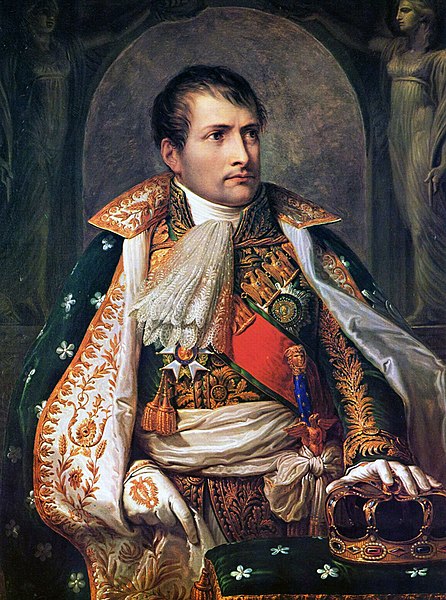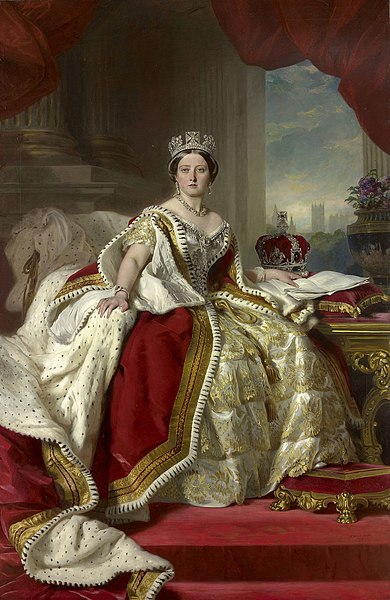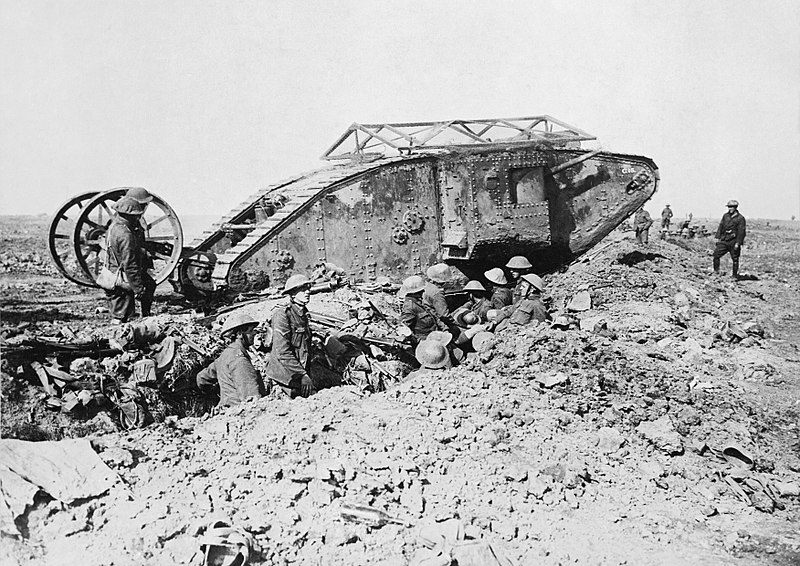This article presents a chronological exploration of 20 significant historical events that occurred on January 29th, spanning various centuries and covering a wide array of subjects from political milestones and groundbreaking inventions to cultural achievements and pivotal moments in sports history.
Each event is meticulously detailed to provide insight into its historical context, significance, and impact on society. Starting with the ascent of Sergius III to the papacy in 904 and moving through time to the opening of the Soviet Union’s first McDonald’s in 1989, this narrative weaves together stories of innovation, bravery, artistic triumph, and transformative societal changes.
Whether it’s the establishment of awards recognizing valor and excellence, the admission of new states, or the announcement of policy shifts that resonate globally, these events collectively offer a rich tapestry of human history and progress on January 29th.
January 29th Events in History
904 – Sergius III comes out of retirement to take over the papacy from the deposed antipope Christopher
Sergius III’s ascension to the papacy marks a significant moment in the history of the Catholic Church. After having previously lost a papal election, he returned from retirement in a dramatic turn of events.
Also Read: January 28 – On this Day in History
His papacy began after the deposing of Christopher, who was considered an antipope, meaning he was not widely recognized as the legitimate pope.
Sergius III’s reign is often noted for its contributions to the architectural development of Rome and its influence on the power dynamics within the Church.
1595 – William Shakespeare’s play “Romeo and Juliet” is probably first performed
“Romeo and Juliet” is one of William Shakespeare’s most famous and enduring tragedies. It tells the story of two young star-crossed lovers whose deaths ultimately reconcile their feuding families.
Also Read: January 30th Events in History
Its first performance in 1595 marked the beginning of its journey to becoming a cornerstone of English literature. The themes of love, fate, and conflict have made it a timeless classic, continually adapted and reinterpreted across various media and cultures.
1676 – Feodor III becomes Tsar of Russia
Feodor III assumed the Russian throne during a period of transition and turmoil in the country’s history. He was the elder son of Tsar Alexis and succeeded his father amidst the backdrop of the Russian nobility’s growing power.
Feodor’s reign was short but notable for his attempts to modernize and reform Russian society, including efforts to improve the condition of the serfs. However, his health was poor, and his progressive policies were often met with resistance.

1814 – France defeats Russia and Prussia in the Battle of Brienne
The Battle of Brienne was a significant engagement during the War of the Sixth Coalition against Napoleon Bonaparte. Taking place near Brienne-le-Château in France, this battle saw Napoleon personally leading his troops to push back the advancing Russian and Prussian forces.
The victory, albeit not decisive, demonstrated Napoleon’s enduring tactical brilliance even as his empire was crumbling. This battle set the stage for the subsequent larger and more critical engagements of 1814.
1845 – “The Raven” is published under the name of Edgar Allan Poe
“The Raven” is a narrative poem by American writer Edgar Allan Poe. First published in January 1845, the poem is often noted for its musicality, stylized language, and supernatural atmosphere.
It tells of a talking raven’s mysterious visit to a distraught lover, tracing the man’s slow fall into madness. The lover, often identified as a student, is lamenting the loss of his love, Lenore. Situated in the man’s chamber, the poem features the raven’s repeated word “Nevermore,” a simple refrain that deepens the poem’s melancholic mood.
“The Raven” made Poe a household name almost overnight, and it remains one of his most famous works, exemplifying his literary skill and preoccupation with themes of grief, loss, and the supernatural.
1856 – Queen Victoria institutes the Victoria Cross
The Victoria Cross (VC) was instituted by Queen Victoria in 1856 to recognize acts of bravery during the Crimean War. It is the highest and most prestigious award of the British honours system, awarded for gallantry “in the face of the enemy” to members of the British armed forces.
Its introduction was significant because it was the first time a medal was awarded based solely on merit, without regard to the social class or rank of the recipient. The VC has a simple design, bearing the inscription “For Valour” and has been awarded to individuals who displayed exceptional courage, often at the cost of their own lives.

1861 – Kansas is admitted as the 34th U.S. state
Kansas was admitted to the Union as the 34th state on January 29, 1861, just months before the outbreak of the American Civil War. Its admission was a pivotal moment in U.S. history, marked by the long and violent conflict known as “Bleeding Kansas,” which emerged from the debate over whether Kansas would enter the Union as a free or slave state.
The Kansas-Nebraska Act of 1854 allowed the territory’s settlers to decide the issue of slavery by popular sovereignty, leading to a period of unrest and conflict between anti-slavery Free-Staters and pro-slavery Border Ruffians. Kansas’ entry as a free state signaled a victory for anti-slavery forces and escalated tensions that contributed to the onset of the Civil War.
1886 – Karl Benz patents the first successful gasoline-driven automobile
On January 29, 1886, Karl Benz patented the Motorwagen, marking the birth of the modern automobile. This vehicle was the first to be designed from the ground up to be powered by an internal combustion engine.
The Motorwagen featured a single-cylinder, four-stroke engine, and its invention is a cornerstone in the history of automotive engineering. Benz’s innovation did not just revolutionize transportation; it paved the way for the development of the global automotive industry, affecting economies, societies, and cultures worldwide.
1916 – World War I: Paris is first bombed by German zeppelins
During World War I, the German military used airships known as zeppelins to conduct raids on various targets, including cities in England and France. On January 29, 1916, Paris experienced its first zeppelin raid. These airships were able to travel at high altitudes, making them difficult to defend against with the technology available at the time.
The bombings were part of Germany’s strategic bombing campaign aimed at damaging morale and causing material destruction. While the physical damage inflicted by these early air raids was relatively limited, the psychological impact of being attacked from the air marked a significant shift in the nature of warfare.

1929 – The Seeing Eye Guide Dog organization forms in the United States
The Seeing Eye, founded on January 29, 1929, is the oldest existing guide dog school in the world. It was established to provide dogs trained to guide people who are blind or visually impaired, enhancing their independence and mobility.
The organization was co-founded by Dorothy Harrison Eustis, an American dog breeder living in Switzerland who was involved in training German shepherds as working dogs, and Morris Frank, a young blind man who was determined to gain better mobility.
After training with the first Seeing Eye dog, Buddy, Frank became a lifelong advocate for the organization, spreading awareness of the capabilities of guide dogs and the difference they can make in the lives of those with vision loss.
The Seeing Eye’s founding marked a significant advancement in services for the visually impaired, promoting the acceptance of guide dogs in society and paving the way for similar programs worldwide.
1936 – The first inductees into the Baseball Hall of Fame are announced
On January 29, 1936, the Baseball Hall of Fame announced its first ever inductees, recognizing players who had made significant contributions to the sport. This inaugural class included some of the most legendary figures in baseball history:
- Ty Cobb
- Babe Ruth
- Honus Wagner
- Christy Mathewson
- Walter Johnson
These athletes had left an indelible mark on the game, setting records and standards that in many cases still stand.
The establishment of the Hall of Fame in Cooperstown, New York, was meant to honor the achievements of baseball’s greatest players, as well as to serve as a central point of history and tradition for the sport.
1959 – Walt Disney’s “Sleeping Beauty” is released
“Sleeping Beauty,” Walt Disney’s 16th animated feature, premiered on January 29, 1959. This film was notable for its distinctive art style, inspired by medieval and Renaissance art, and for being the first animated film to be photographed in the Super Technirama 70 widescreen process.
It was based on the fairy tale of the same name and featured music adapted from Pyotr Ilyich Tchaikovsky’s ballet.
“Sleeping Beauty” was an ambitious project that took nearly a decade to complete and was one of the most expensive movies of its time. Despite a lukewarm initial reception, it has since become one of Disney’s most beloved classics, praised for its artistic achievements and enduring charm.
1963 – The first inductees into the Pro Football Hall of Fame are announced
The Pro Football Hall of Fame announced its first class of inductees on January 29, 1963, solidifying the legacies of some of the greatest contributors to American football. The inaugural class included 17 members, among them iconic figures such as Jim Thorpe, Red Grange, George Halas, and Curly Lambeau.
These individuals were celebrated for their pioneering roles as players, coaches, and founders, contributing significantly to the development and popularity of the sport in the United States. The Hall of Fame, located in Canton, Ohio, was established to honor exceptional achievements in professional football and to preserve the sport’s history.
1979 – Brenda Spencer carries out a shooting at a San Diego school, inspiring the song “I Don’t Like Mondays”
On January 29, 1979, Brenda Spencer, a 16-year-old high school student in San Diego, California, perpetrated one of the first school shootings to capture national media attention in the United States.
Armed with a rifle given to her as a Christmas gift, she fired at children in a school playground, resulting in two deaths and nine injuries.
When asked about her motive, Spencer infamously replied, “I don’t like Mondays,” a statement that inspired the Boomtown Rats’ hit song of the same name.
This tragic event not only led to increased awareness and debate over gun control laws and school safety but also highlighted the impact of media on the public perception of crime.
1989 – The Soviet Union’s first McDonald’s fast food restaurant is announced to be opened in Moscow
The announcement on January 29, 1989, that the Soviet Union would open its first McDonald’s fast-food restaurant marked a significant cultural and economic milestone during the late stages of the Cold War.
The opening in Moscow on January 31, 1990, was symbolic of the thawing relations between the East and West and represented a notable moment of American cultural penetration into the Soviet sphere.
The McDonald’s in Pushkin Square became the world’s largest at the time, serving over 30,000 customers on its opening day. This event was part of the broader processes of perestroika and glasnost, reforms initiated by Mikhail Gorbachev to open up the Soviet economy and society.
1996 – French President Jacques Chirac announces a “definitive end” to nuclear weapons testing
In a significant move towards nuclear disarmament and non-proliferation, French President Jacques Chirac announced on January 29, 1996, that France would no longer conduct nuclear tests. This decision followed a series of controversial tests in the Pacific that drew widespread international condemnation and protests, including from within France itself.
By declaring a permanent end to its testing program, France aligned with a growing global consensus against the continuation of nuclear weapons testing, contributing to the momentum towards the Comprehensive Nuclear-Test-Ban Treaty (CTBT), which seeks to ban all nuclear explosions.
2002 – In his State of the Union address, President George W. Bush describes “regimes that sponsor terror” as an Axis of Evil
In a moment that would significantly shape U.S. foreign policy and international relations in the early 21st century, President George W. Bush, in his State of the Union address on January 29, 2002, labeled Iran, Iraq, and North Korea as the “Axis of Evil.”
This term was used to describe governments that he accused of helping terrorism and seeking weapons of mass destruction. Bush’s speech laid the groundwork for the approach the U.S. would take towards these nations, particularly in the lead-up to the Iraq War in 2003.
This labeling also had lasting implications for diplomatic relations between the U.S. and the mentioned countries.
2006 – India’s Irfan Pathan becomes the first person to take a Test cricket hat-trick in the opening over of a match
On January 29, 2006, Indian cricketer Irfan Pathan achieved a remarkable feat in the world of cricket. He became the first player to take a hat-trick in the very first over of a Test match, against Pakistan in Karachi.
A hat-trick in cricket is when a bowler takes three wickets with consecutive deliveries. Pathan’s achievement was not only a testament to his skill and precision but also a historic moment in Test cricket, showcasing the dramatic and unpredictable nature of the sport.
2013 – SCOTUS Justice Sonia Sotomayor publishes her memoir “My Beloved World”
Supreme Court Justice Sonia Sotomayor released her memoir, “My Beloved World,” on January 29, 2013. The book provides an intimate and inspiring look at her life, from her childhood in the Bronx to her historic appointment as the first Latina Supreme Court Justice in U.S. history.
Sotomayor’s memoir is celebrated for its candid and heartfelt exploration of her formative years, her educational journey, and her legal career. It offers insight into the challenges she faced, including dealing with diabetes from a young age and navigating the complexities of the legal profession as a woman of color.
2019 – A polar vortex hits the Midwestern United States, causing temperatures to fall to record-breaking lows
In late January 2019, a severe weather event known as a polar vortex brought unprecedented cold to the Midwestern United States. This meteorological phenomenon caused temperatures in some parts of the region to drop to as low as -30°F (-34°C), with wind chill factors making it feel even colder.
The extreme cold led to widespread school closures, flight cancellations, and at least 21 fatalities. The 2019 polar vortex highlighted the challenges of severe weather events, prompting discussions on infrastructure resilience, emergency preparedness, and the broader impacts of climate change on weather patterns.
